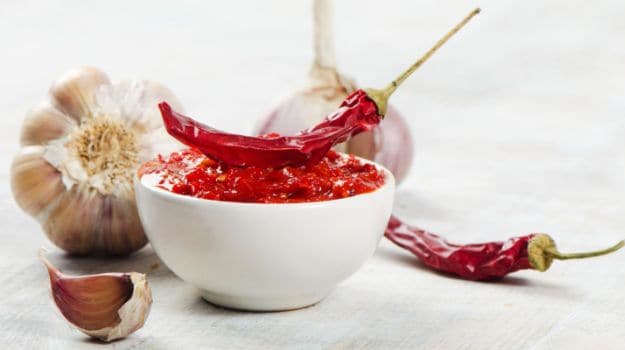Red chillies are one of the most commonly used spices. In their powdered form, they are often used in Indian curries to add flavour and a rich colour. There was a time when our grandmothers would sun dry fresh red chillies and then pound them to make the powdered form which was stored and used frequently. Over the years, we've moved to buying packaged red chilli powder for the sake of convenience.But, how safe is the red chilli powder that you have been using? Could it be adulterated? Adulterants are mostly added to powdered spices to increase their bulk and also to enhance their colour. Crushed wood or husk can be used to increase the weight of packaged spices or you may also find the use of artificial coloursthat improve the look and feel of the spices.As a consumer, you always need to be careful about these things and look out for your own safety. Use these simple tests at home to know if the red chilli powder that you are using is pure or not.
(Also read: The Various Types of Red Chillies in India)
There was a time when our grandmothers would sun dry fresh red chillies and then pound them1. The Water TestChilli powder is mostly adulterated with brick powder, salt powder or talc powder. The simplest way to detect these is to add a teaspoon of chilli powder to a glass of plain water. If it is artificially coloured, the water will change its colour. It may turn reddish-brown, due to the presence of brick powder. Pure red chilli powder does not really dissolve in water. This is, in fact, the best way to check for adulterants. If you find a white residue at the bottom of the glass which has a smooth feel, it could indicate the presence of soap stone.  Chilli powder is mostly adulterated with brick powder, salt powder or talc powder. Photo Credit: Istock
Chilli powder is mostly adulterated with brick powder, salt powder or talc powder. Photo Credit: Istock
2. Checking for Brick PowderThe most common adulterant for red chilli powder is brick powder because it has a similar texture and colour. To test for brick powder, rub some chilli powder at the bottom of a glass. If you feel some kind of grittiness, it could indicate the presence of brick powder or even sand.3. To Test for Artificial ColoursRed chilli powder may be mixed with artificial colours to give it the bright hue. Sprinkle some chilli powder over a glass of water. It you notice a coloured streak; your red chilli powder could be adulterated. In most cases, water soluble coal tar colour is added to red chilly powder. (Also read: 6 Tips to Grind Your Spices Better) Red chilli powder may be mixed with artificial colours. Photo Credit: Istock4. To Detect StarchStarch is often added to red chilli powder to add bulk. To test for starch, add few drops of tincture Iodine or Iodine solution to the powdered spice. If you notice a blueish colour change, it shows the presence of starch.It is fairly easy to grind your red chillies at home and much safer too. The flavours are real and fresher and it can be easily made before hand and stored for later use.
Red chilli powder may be mixed with artificial colours. Photo Credit: Istock4. To Detect StarchStarch is often added to red chilli powder to add bulk. To test for starch, add few drops of tincture Iodine or Iodine solution to the powdered spice. If you notice a blueish colour change, it shows the presence of starch.It is fairly easy to grind your red chillies at home and much safer too. The flavours are real and fresher and it can be easily made before hand and stored for later use.
(Also read: The Various Types of Red Chillies in India)

There was a time when our grandmothers would sun dry fresh red chillies and then pound them1. The Water TestChilli powder is mostly adulterated with brick powder, salt powder or talc powder. The simplest way to detect these is to add a teaspoon of chilli powder to a glass of plain water. If it is artificially coloured, the water will change its colour. It may turn reddish-brown, due to the presence of brick powder. Pure red chilli powder does not really dissolve in water. This is, in fact, the best way to check for adulterants. If you find a white residue at the bottom of the glass which has a smooth feel, it could indicate the presence of soap stone.
 Chilli powder is mostly adulterated with brick powder, salt powder or talc powder. Photo Credit: Istock
Chilli powder is mostly adulterated with brick powder, salt powder or talc powder. Photo Credit: Istock2. Checking for Brick PowderThe most common adulterant for red chilli powder is brick powder because it has a similar texture and colour. To test for brick powder, rub some chilli powder at the bottom of a glass. If you feel some kind of grittiness, it could indicate the presence of brick powder or even sand.3. To Test for Artificial ColoursRed chilli powder may be mixed with artificial colours to give it the bright hue. Sprinkle some chilli powder over a glass of water. It you notice a coloured streak; your red chilli powder could be adulterated. In most cases, water soluble coal tar colour is added to red chilly powder. (Also read: 6 Tips to Grind Your Spices Better)

Advertisement






